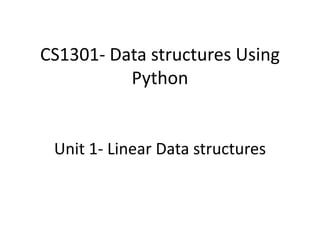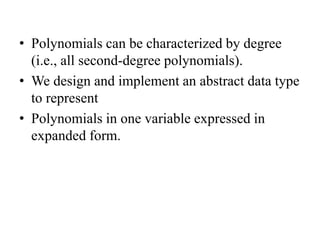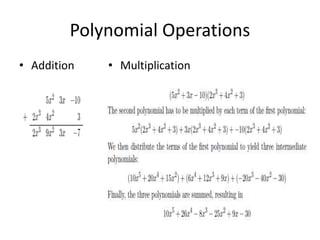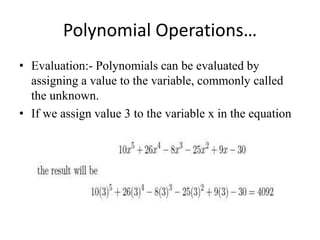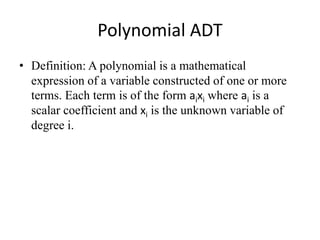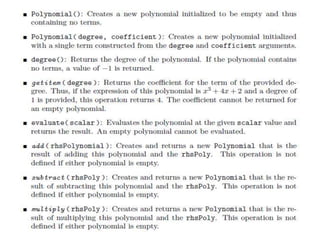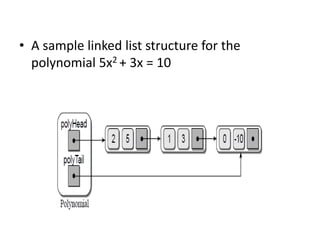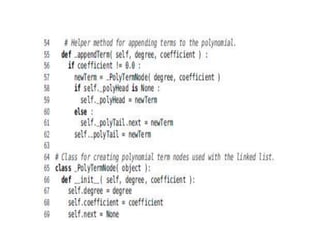This document describes an implementation of a polynomial abstract data type (ADT) using a linked list in Python. It discusses representing polynomials as terms in a linked list, with each node storing a term. Operations like addition, multiplication, evaluation are supported. The implementation uses a tail pointer for efficient appends when adding terms during arithmetic operations. Key methods like constructors, degree, get, evaluate are implemented, with addition shown as an example of iterating over the polynomials and appending new terms to the end of the linked list.
